August 5, 2020, Tashkent. The Center for Economic Research and Reforms (CERR) under the Administration of the President of the Republic of Uzbekistan conducted another survey among entrepreneurs to assess the business climate in Uzbekistan. In July’s survey 1003 enterprises took part.
In general, in July 2020, indicators of the business climate, current state and expectations of development prospects showed moderate declines. However, the current values remain above the results of May this year (Figure 1).
Figure 1. Dynamics of business climate indicators, expectations of development prospects and current state
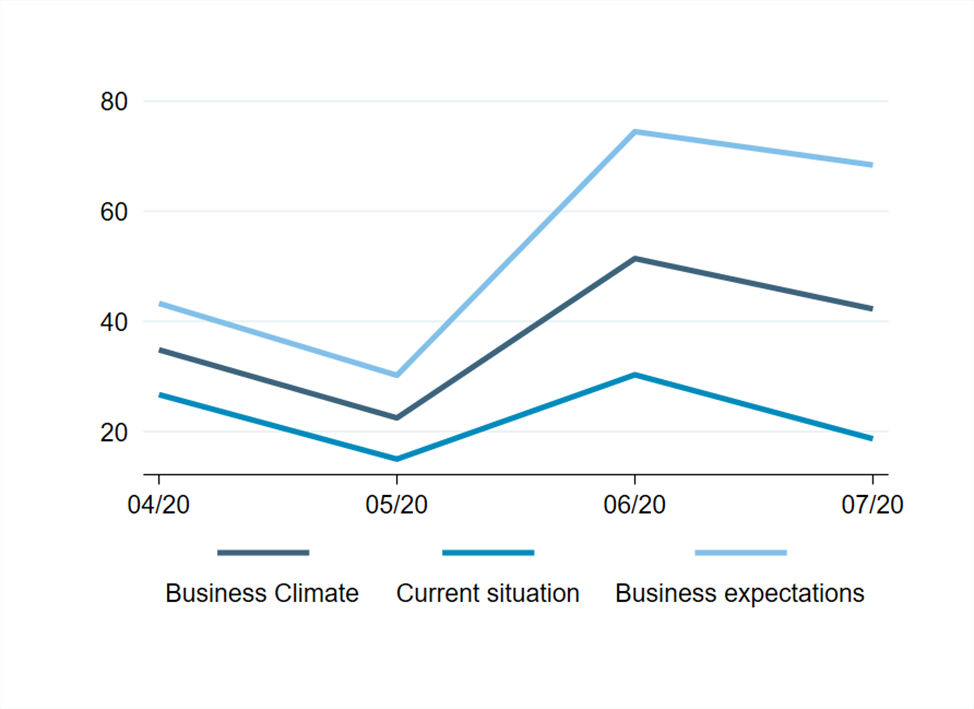
Survey of enterprises conducted based on two directions: a qualitative assessment of the current state of business and the expectations of entrepreneurs regarding the prospects for the development of their business in the next 2-3 months.
Results of assessment of the state of business climate
Indicator of the current state of the business
The indicator of the current state of business showed a moderate decline and totaled 19 points, down to 11 points compared with the previous month, which characterizes a moderately positive mood of entrepreneurs about the current state of their business (Table 1).
Table 1. Values of indicators of the state of the business climate in Uzbekistan
| Period
| 04/2020 | 05/2020 | 06/2020 | 07/2020 |
| Current state
| 26 | 15 | 30 | 19 |
| Expectations regarding prospects
| 43 | 30 | 74 | 68 |
| Business climate
| 35 | 22 | 51 | 42 |
According to the survey, 30 % of companies assessed the current state of the business as a "Good", 47 % as "Satisfactory" and 23 % as "Bad".
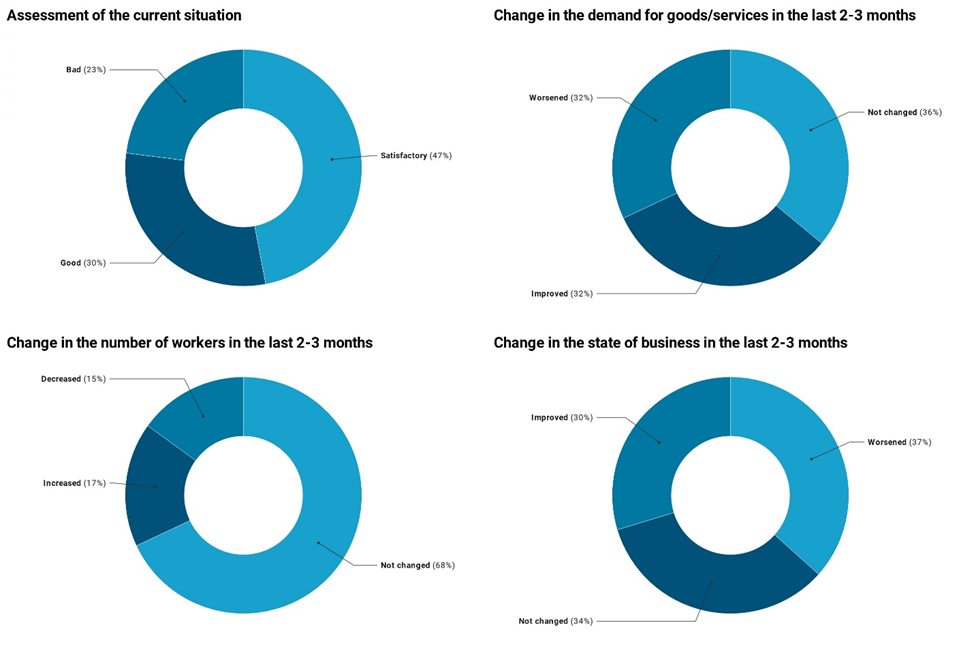
32 % of enterprises reported that demand for goods/services “has improved”, and 36% and 32% of respondents answered that demand “has not changed” and “worsened” accordingly. The number of employees “increased” for 17 % of enterprises, “did not change” for 68 %, and “decreased” for 15 % of enterprises.
Business development prospects expectations indicator
Indicator of expectations about prospects for the development of business in the next 2-3 months totaled 68 points , showing a slight decline of 6 points compared to June month , suggesting that expectations of entrepreneurs about the prospects for the development of their business in the next 2-3 months is positive (Table 1).
The analysis showed that 68 % of the surveyed enterprises assessed the prospects for business development as "will improve", 29 % believe that it "will not change" and only 3 % expect that it "will worsen".
65% of enterprises believe that demand for goods/services “will improve”, while 30% of entrepreneurs think that demand “will not change”, and only 5% reported that demand “will worsen”. According the survey it is expected that the number of employees will “increase” in 53 % of enterprises, whereas for 45% of organizations the number of workers for the next 2-3 months “will not change” and only 2% or organizations report about “decline” in the number of employees. 36% of the surveyed enterprises expect an “increase” in prices for their goods/services , 61 % are sure that prices for goods/services “will not change” and only 3 % believe that prices “will decrease”.
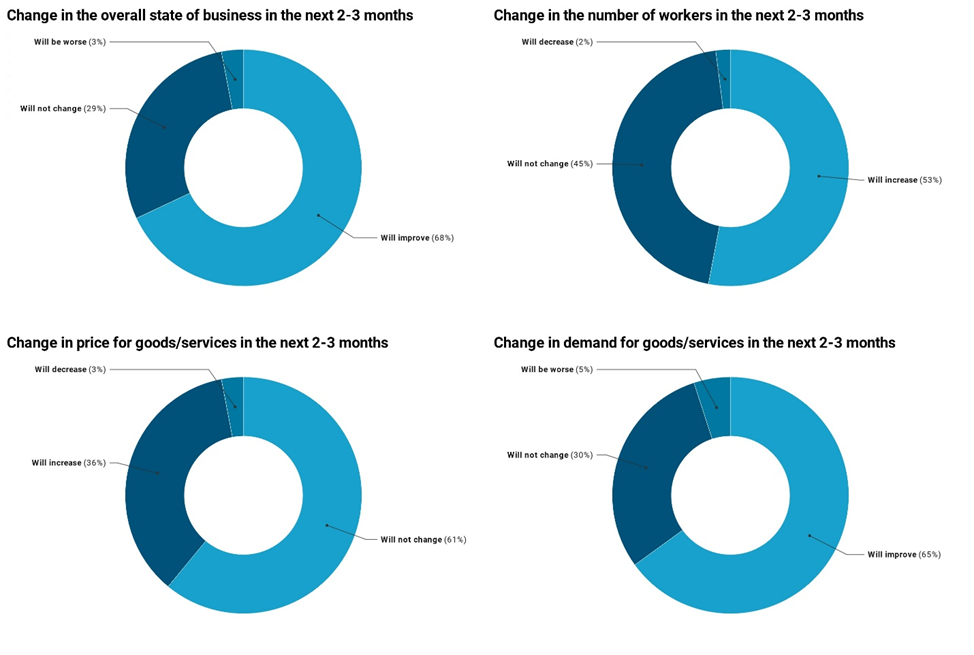
Business Climate Indicator
Business climate indicator was equal to 42 points showing a decline to 9 points , meaning that the state of the business climate in the country is assessed as good (Table 1) .
The relationship between the values of the current situation and expectations means that the country's economy will experience intensive development in the next 2-3 months (Figure 2).
Figure 2. Phases of the economic cycle of the Republic of Uzbekistan
It should be noted that assessment of analogous business climate indicators in Russia ( - 5 ) and China ( 51.1 ) showed a slight increase of 1 and 0.2 points respectively in comparison with the previous month; in Turkey ( 101 ) increase of 8.4 points was observed, while in South Korea (57) increase of 6 points was reported.
Appendix
The business climate assessment includes three main indicators:
Assessment of the current situation of the business. It is calculated as the difference between the answers “Good” and “Bad” as a percentage of the total sample. The value of the current situation varies from -100 points (all respondents rate the current situation as bad) to 100 points (all respondents rate the current situation as good);
Business expectations for the next 2-3 months. It is calculated as the difference between the answers “will improve” “will worsen” as a percentage of the total sample. The expectation value varies from -100 points (all respondents expect further deterioration of their business) to 100 points (all respondents expect further improvement of their businesses);
The value of the business climate is based on the average balance values of the current situation and business expectations. The value of the business climate can fluctuate between -100 points (all respondents assess the current situation as bad and expect further deterioration of their business) and 100 points (all respondents assess current situation as good and expect further improvement in their business);
Based on the relationship between indicators of the current situation and business expectations, it is possible to determine the phases of the economic cycle in the country for the next 2-3 months, (Figure 2).
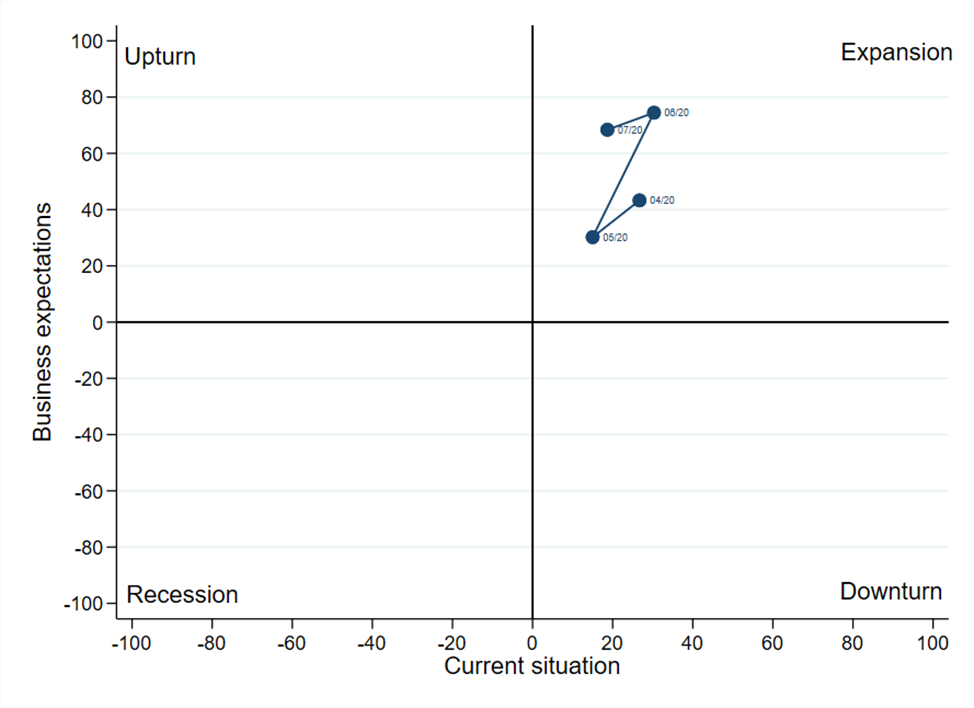
If both values of the current situation and expectations are negative, then the economy in the country in the next 2-3 months will be in a state of recession.
If the value of current situation is negative, while the value of expectations is positive, then the economy in the 2-3 months will experience upturn.
If both values of the current situation and expectations are positive, then the economy in the 2-3 months will experience expansion.
If the value of the current situation is positive, while the expectation value is negative, then the economy in the next 2-3 months will demonstrate a downturn.
Feruzbek Davletov,
Center for Economic Research and Reforms.

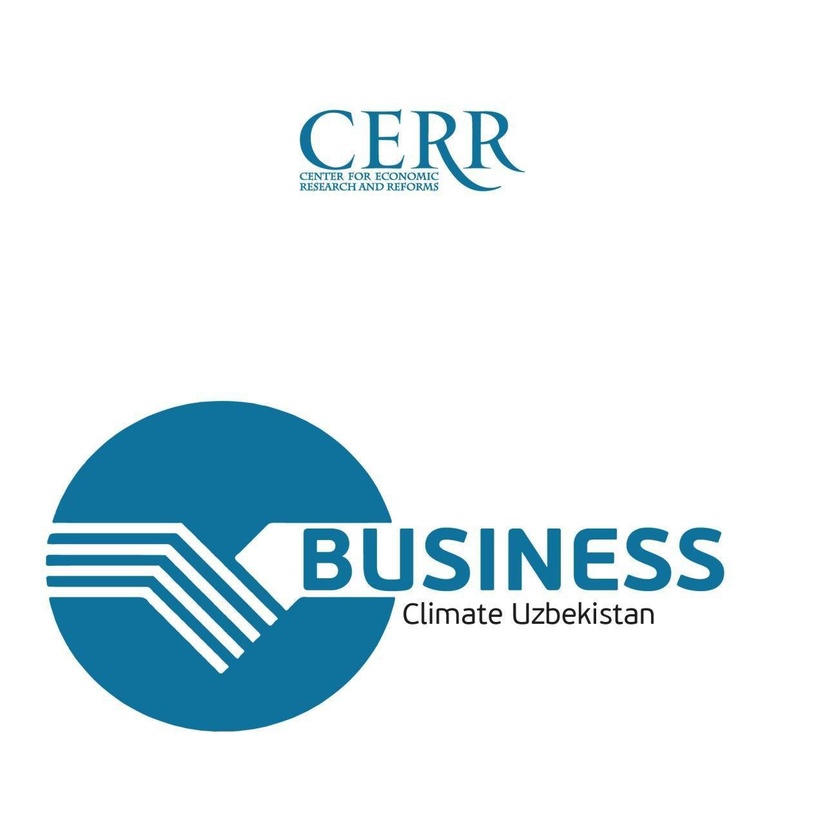



















leave a comment